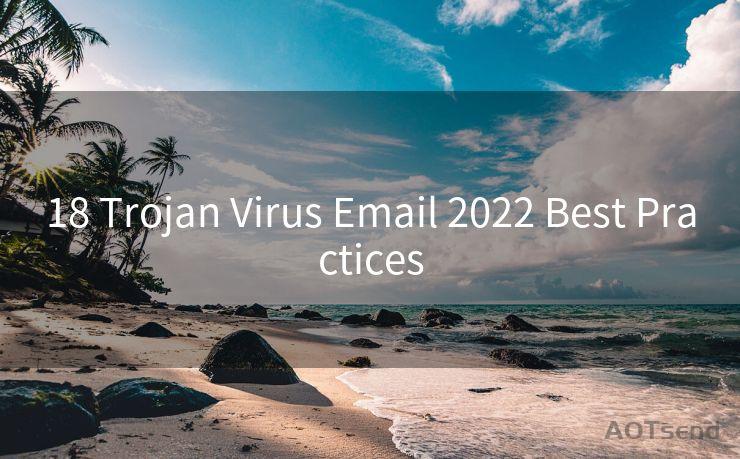18 Trojan Virus Email 2022 Best Practices




In the digital age, email has become an indispensable tool for communication, but it also poses significant security risks. One of the most common threats is the Trojan virus, often delivered via seemingly harmless emails. As we move into 2022, it's crucial to stay vigilant and adopt best practices to protect yourself from these malicious emails. Here are 18 best practices to keep you safe from Trojan virus emails.
1. Be Suspicious of Unexpected Emails
Always approach unexpected emails with caution. If you don't recognize the sender or the content seems out of the ordinary, it's best to delete the email without opening it.
2. Don't Open Unknown Attachments
Never open attachments from unknown senders or those you weren't expecting. Trojan viruses often hide in seemingly harmless files like PDFs or Word documents.
3. Scan Attachments with Antivirus Software
Before opening any attachment, make sure to scan it with reliable antivirus software. This can help detect and block potential Trojan viruses.
4. Hover Over Links
Before clicking on any link in an email, hover over it to check the destination URL. If it looks suspicious or doesn't match the context of the email, avoid clicking on it.
5. Use Strong Passwords
Create complex and unique passwords for your email accounts. Avoid using easily guessable information like your name or birthdate.
6. Enable Two-Factor Authentication
Adding an extra layer of security, like two-factor authentication, can significantly reduce the risk of unauthorized access to your email account.
7. Keep Your Software Updated
Regularly update your email client, operating system, and any other relevant software. These updates often include security patches and bug fixes.
8. Avoid Using Public Wi-Fi for Sensitive Emails
Public Wi-Fi networks are prone to security risks. Avoid accessing sensitive emails or attachments when connected to these networks.
9. Be Cautious of Phishing Scams
Phishing scams use fake emails that appear to be from legitimate sources, often asking for sensitive information. Always verify the sender's identity before responding.
10. Don't Reply to Spam Emails
Replying to spam emails confirms your email address as active, potentially leading to more spam and increased security risks.
11. Use a Secure Email Provider
Choose an email provider that offers end-to-end encryption and other security features to protect your emails from being intercepted.
12. Regularly Backup Your Data
In case of a Trojan virus attack, having a backup of your important data can help you quickly recover.
13. Educate Yourself on the Latest Threats
Stay informed about the latest email scams and Trojan viruses to better identify and avoid them.
14. Use a Firewall
A firewall can help block unauthorized access to your computer, reducing the risk of Trojan virus infections.
15. Avoid Forwarding Suspicious Emails
If you receive a suspicious email, don't forward it to others. This can spread the potential threat.

16. Report Suspicious Emails
🔔🔔🔔
【AOTsend Email API】:AOTsend is a Managed Email Service for sending transactional emails. Support Email Types: reminders, authentication, confirmations, notifications, verification codes, invoices, password resets, account activations, billing statements, two-factor authentication (2FA), and one-time passwords (OTP) emails, etc. $0.28 per 1000 Emails. 99% Delivery, 98% Inbox Rate.
You might be interested in:
Why did we start the AOTsend project, Brand Story?
What is a Managed Email API, How it Works?
Best 25+ Email Marketing Platforms (Authority,Keywords&Traffic Comparison)
Best 24+ Email Marketing Service (Price, Pros&Cons Comparison)
Email APIs vs SMTP: How they Works, Any Difference?
If you receive a suspicious email, report it to your email provider or the relevant authorities.
17. Practice Safe Browsing Habits
Avoid visiting untrusted websites or downloading content from unknown sources, as these can be gateways for Trojan viruses.
18. Regularly Review Your Email Settings
Periodically check your email settings to ensure no unauthorized changes have been made, such as the addition of unknown forwarding addresses.
By following these best practices, you can significantly reduce the risk of falling victim to a Trojan virus email attack in 2022. Remember, staying vigilant and proactive is key to protecting your digital security.




Scan the QR code to access on your mobile device.
Copyright notice: This article is published by AotSend. Reproduction requires attribution.
Article Link:https://www.mailwot.com/p2154.html



